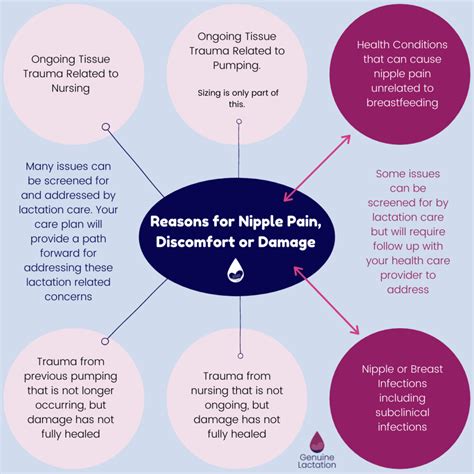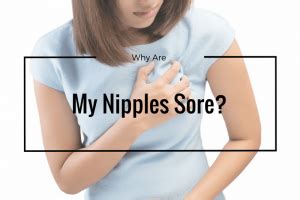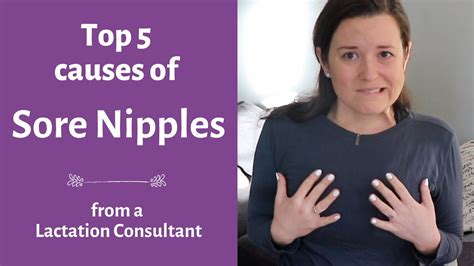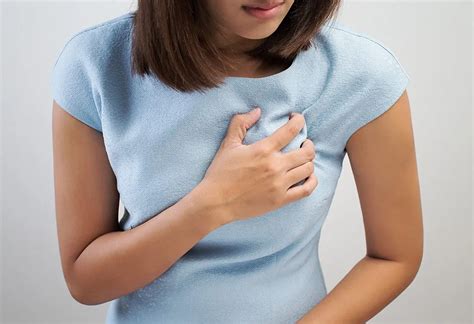Intro
Nipple soreness can be a concerning and uncomfortable experience for many individuals. It's essential to understand that nipple soreness can be caused by a variety of factors, ranging from minor irritations to more serious underlying conditions. In this article, we will delve into the possible causes of nipple soreness, discuss the symptoms and signs to look out for, and explore the various treatment options available.
Nipple soreness can affect anyone, regardless of age or gender. It's crucial to recognize the signs and symptoms of nipple soreness to seek medical attention if necessary. Some common symptoms of nipple soreness include pain, tenderness, or discomfort in the nipple area, which can be exacerbated by touch or movement. In some cases, nipple soreness can be accompanied by other symptoms such as redness, swelling, or discharge.
In many cases, nipple soreness can be attributed to minor causes such as friction or irritation from clothing, breastfeeding, or other external factors. However, it's essential to consult a healthcare professional to rule out any underlying conditions that may require medical attention. A proper diagnosis can help identify the cause of nipple soreness and guide the development of an effective treatment plan.
Nipple Soreness Causes

Friction and Irritation
Friction and irritation from clothing or other external factors can cause nipple soreness. This can be due to tight or ill-fitting clothing, excessive exercise, or other activities that cause repeated friction on the nipple area. To prevent friction and irritation, it's essential to wear comfortable, well-fitting clothing and avoid excessive exercise or activities that cause repeated friction.Breastfeeding and Nipple Stimulation
Breastfeeding and nipple stimulation can also cause nipple soreness. This can be due to the repeated sucking action of the baby, which can cause friction and irritation on the nipple area. To alleviate nipple soreness caused by breastfeeding, it's essential to ensure proper latching and positioning of the baby, as well as to use nipple shields or other protective devices if necessary.Nipple Soreness Symptoms

Pain and Tenderness
Pain and tenderness in the nipple area are common symptoms of nipple soreness. This can be exacerbated by touch or movement, and can range from mild to severe. To alleviate pain and tenderness, it's essential to avoid further irritation or friction on the nipple area, and to use pain-relieving medications or creams if necessary.Redness and Swelling
Redness and swelling of the nipple area can also be symptoms of nipple soreness. This can be due to inflammation or infection, and can range from mild to severe. To alleviate redness and swelling, it's essential to apply cold compresses or ice packs to the affected area, and to use anti-inflammatory medications or creams if necessary.Nipple Soreness Treatment

Avoiding Further Irritation
Avoiding further irritation or friction on the nipple area is essential to alleviate nipple soreness. This can be achieved by wearing comfortable, well-fitting clothing, avoiding excessive exercise or activities that cause repeated friction, and using protective devices such as nipple shields if necessary.Using Pain-Relieving Medications
Using pain-relieving medications or creams can help alleviate nipple soreness. This can include over-the-counter pain relievers such as acetaminophen or ibuprofen, as well as topical creams or ointments containing ingredients such as lidocaine or benzocaine.Nipple Soreness Prevention

Wearing Comfortable Clothing
Wearing comfortable, well-fitting clothing can help prevent nipple soreness. This can include wearing loose-fitting shirts or tops, avoiding tight or constrictive clothing, and using breathable fabrics such as cotton or silk.Practicing Good Hygiene
Practicing good hygiene and keeping the nipple area clean and dry can also help prevent nipple soreness. This can include washing the nipple area with mild soap and water, avoiding harsh or abrasive cleansers, and drying the nipple area thoroughly after bathing or showering.What are the common causes of nipple soreness?
+Nipple soreness can be caused by a range of factors, including hormonal changes, skin conditions, and underlying medical conditions. Some common causes of nipple soreness include friction or irritation from clothing or other external factors, breastfeeding or nipple stimulation, hormonal changes during menstruation, pregnancy, or menopause, skin conditions such as eczema, psoriasis, or dermatitis, and underlying medical conditions such as breast cancer, mastitis, or thrush.
How can I alleviate nipple soreness caused by breastfeeding?
+To alleviate nipple soreness caused by breastfeeding, it's essential to ensure proper latching and positioning of the baby, as well as to use nipple shields or other protective devices if necessary. Additionally, applying cold compresses or ice packs to the affected area, using pain-relieving medications or creams, and practicing good hygiene and keeping the nipple area clean and dry can also help alleviate nipple soreness.
Can nipple soreness be a sign of an underlying medical condition?
+Yes, nipple soreness can be a sign of an underlying medical condition. It's essential to consult a healthcare professional to rule out any underlying conditions that may require medical attention. A proper diagnosis can help identify the cause of nipple soreness and guide the development of an effective treatment plan.
In conclusion, nipple soreness can be a concerning and uncomfortable experience, but it's essential to understand that it can be caused by a variety of factors. By recognizing the signs and symptoms of nipple soreness, consulting a healthcare professional, and practicing good hygiene and prevention, individuals can alleviate nipple soreness and maintain good breast health. We invite you to share your thoughts and experiences with nipple soreness, and to reach out to us if you have any further questions or concerns.
